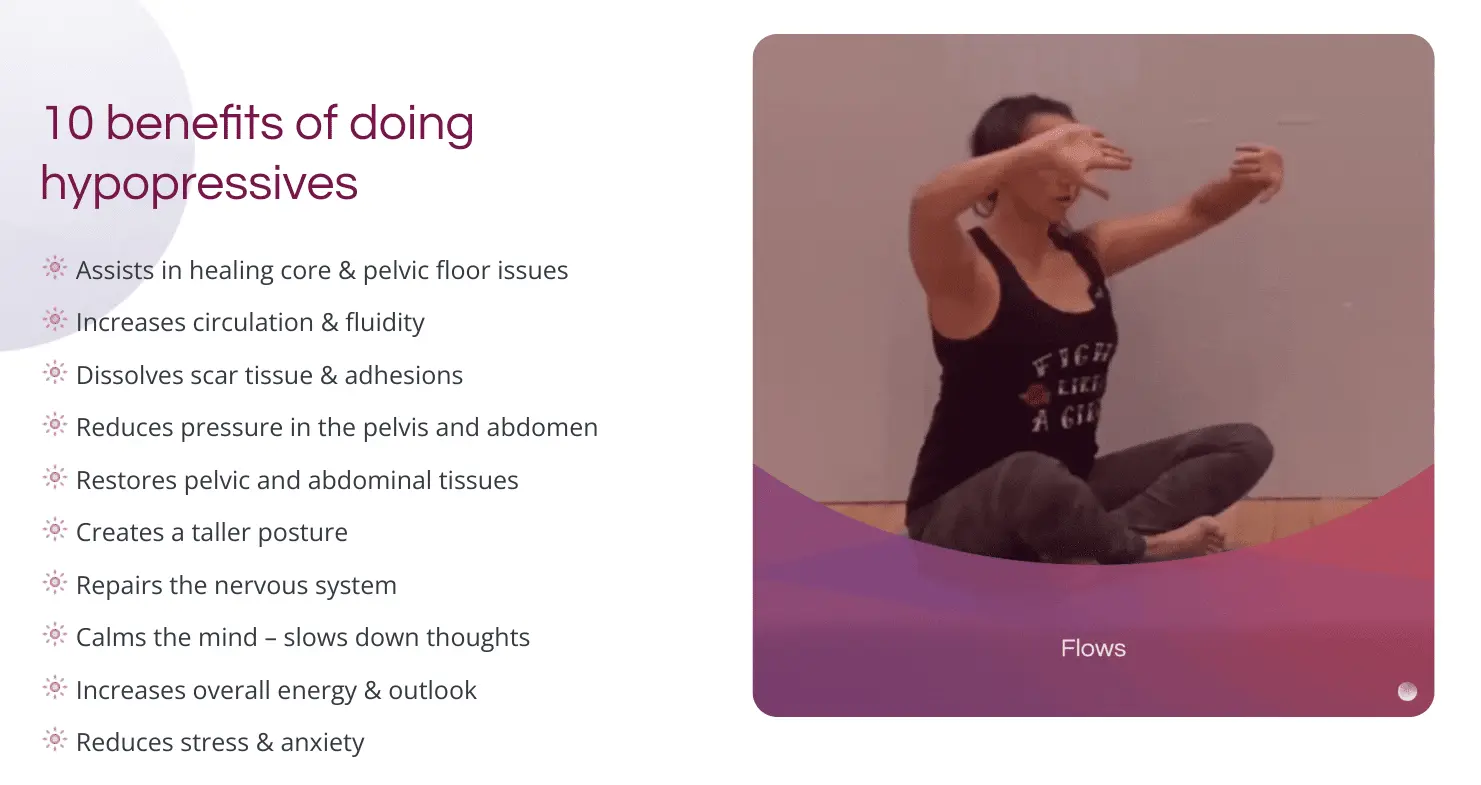Scar Tissue Massage to Heal Prolapse Naturally
- August 10, 2022
- Pelvic Floor
 Some find scars attractive, others dislike them, but one thing is true – when it comes to pelvic floor scars, barely anyone talks about them. Sadly, however, they are more common than you may think. An estimated 70% of all women develop some form of scarring following childbirth, Scars in the pelvic floor can also develop after an injury, surgical procedure, or infection. What does scar tissue have to do with healing pelvic organ prolapse? Quite a lot, actually. Scar tissue significantly inhibits the optimal performance of the pelvic floor. Therefore, improving pelvic floor health through scar tissue massage and remediation can not only improve your symptoms but heal and reverse prolapse altogether. Let’s see how it works.
Some find scars attractive, others dislike them, but one thing is true – when it comes to pelvic floor scars, barely anyone talks about them. Sadly, however, they are more common than you may think. An estimated 70% of all women develop some form of scarring following childbirth, Scars in the pelvic floor can also develop after an injury, surgical procedure, or infection. What does scar tissue have to do with healing pelvic organ prolapse? Quite a lot, actually. Scar tissue significantly inhibits the optimal performance of the pelvic floor. Therefore, improving pelvic floor health through scar tissue massage and remediation can not only improve your symptoms but heal and reverse prolapse altogether. Let’s see how it works.First, a Few Facts about Scars and Scar Tissue
During the healing process that follows an injury or an incision, your body produces collagen fibers that close and heal the wound. However, the new collagen fibers do not form in the same consistent manner as regular tissues do. Therefore, scars are usually discolored and have an uneven texture. While scabbing that has formed over the wound will come off in about ten days or a bit longer, scars will continue to heal for approximately two years. Mature scars will look smaller and feel tighter as well as will have a paler appearance. Despite providing the body with a powerful ability to heal and self-preserve, scar tissue can cause various problems, especially in such intricate and sensitive areas like the pelvic floor. Our entire body is held together by fascia, the connective tissue that encases everything in the body from the bones and muscles to the organs, tendons, ligaments, and nerves. Scar tissue disrupts fascia and causes interruptions in its function. Since scar tissue consists primarily of collagen, it is unable to support adequate circulation, lymph drainage, and nerve function. It is also less flexible, has a limited range of motion, and causes reduced sensitivity. This can result in your body not being able to properly feel and control the area. In more severe cases, this can lead to muscle atrophy. Pelvic floor muscle and tissue tightness and reduced mobility paired with your body not being able to properly map and control the area prevent your pelvic floor from adequately contracting and relaxing to support the body’s functions. This weakens the pelvic floor, contributing to the development of pelvic organ prolapse, fecal or urinary incontinence, and other forms of pelvic floor dysfunction.What Is Scar Tissue Massage?
Scar tissue massage is an approach to work with scar tissue, both internal and external. While scar tissue massage is a more widely used term, scar tissue remediation is a more accurate way of referring to it. It not only involves hands-on techniques but emotional treatment as well, particularly in the area where you perform the remediation. Scars are physical representations of trauma. Therefore, resolving scar-related issues requires a holistic approach that focuses on both physical symptoms and limitations as well as the release of emotional trauma.Can Scar Tissue Massage Help You Heal Prolapse Naturally?
Prolapse occurs when pelvic floor muscles and tissues are no longer able to provide optimal support for the pelvic floor organs and hold them in place. As a result, these organs are pulled into the vagina. This is often the aftermath of increased abdominal-pelvic pressure during pregnancy and tearing or medical intervention during childbirth; however, prolapse can also develop due to aging and other factors. Increased pressure on the pelvic floor weakens it. Tearing, episiotomies, forceps use, or other trauma leads to the development of scar tissue, which makes pelvic floor muscles and tissues tight, less flexible, and less sensitive. Due to that, the pelvic floor cannot perform its functions in the way it was designed to. Nonetheless, there’s no reason to give up hope that things can go back to normal (or even better than they were before). There was a wise woman who once told me that “if you give a scar what it needs, it will dissolve.” Scar tissue massage and remediation can soften and break up scar tissue and improve its mobility. This can help to release tension as well as enhance the functionality of the surrounding tissues. Lymphatic drainage and blood and oxygen flow, improve as well, and the area can regain sensitivity. The scar becomes more pliable and flexible. As a result, the pelvic floor can restore its original ability to optimally perform its functions, such as providing the necessary support for the pelvic organs. This not only diminishes pain and discomfort but can also heal and reverse prolapse and incontinence and improve sexual function and satisfaction.Scar Tissue Remediation: When & How
 With many scars, you can start scar tissue massage to break up the tissue as early as two weeks after the injury. However, with pelvic floor and C-section scars, it’s best to hold off until after your postnatal six-week checkup. Your doctor will confirm whether your stitches or tearing have fully healed. If there are open areas, scabbing, or any other issues such as vaginal infections, it’s best to heal them first before you begin scar tissue massage. You can perform scar tissue remediation by yourself or seek experienced professional help. For a simple scar tissue massage by yourself,
you can do the following: • Thoroughly clean the area and wash your hands, • Start by massaging the tissues surrounding the scar tissue. As it becomes less sensitive, you can start working with the scar tissue itself, • Alternating circular, up and down, and side-to-side movements, • Use plenty of organic castor oil. It has beneficial properties that help scars to heal. • Repeat for about 10 minutes daily or 30 minutes a week. An experienced scar tissue remediation professional will be able to break up scar tissue through hands-on massage as well as integrate other approaches to help you release the emotional trauma that your scar may be holding on to. How to Enhance the Effects of Scar Tissue Massage to Heal Prolapse
With many scars, you can start scar tissue massage to break up the tissue as early as two weeks after the injury. However, with pelvic floor and C-section scars, it’s best to hold off until after your postnatal six-week checkup. Your doctor will confirm whether your stitches or tearing have fully healed. If there are open areas, scabbing, or any other issues such as vaginal infections, it’s best to heal them first before you begin scar tissue massage. You can perform scar tissue remediation by yourself or seek experienced professional help. For a simple scar tissue massage by yourself,
you can do the following: • Thoroughly clean the area and wash your hands, • Start by massaging the tissues surrounding the scar tissue. As it becomes less sensitive, you can start working with the scar tissue itself, • Alternating circular, up and down, and side-to-side movements, • Use plenty of organic castor oil. It has beneficial properties that help scars to heal. • Repeat for about 10 minutes daily or 30 minutes a week. An experienced scar tissue remediation professional will be able to break up scar tissue through hands-on massage as well as integrate other approaches to help you release the emotional trauma that your scar may be holding on to. How to Enhance the Effects of Scar Tissue Massage to Heal Prolapse  Even though scar tissue massage can be an extremely effective approach in your journey to healing prolapse, you can improve or even accelerate your healing process by integrating additional holistic practices into your lifestyle.
Even though scar tissue massage can be an extremely effective approach in your journey to healing prolapse, you can improve or even accelerate your healing process by integrating additional holistic practices into your lifestyle.1. Adopt Anti-Inflammatory Practices
Inflammation is a natural part of the body’s healing process. Additional inflammation may make it worse, whereas focusing on reducing inflammation can support the healing process, especially if your scar tissue is relatively new. Thus, to reduce possible inflammation in the body: • Reduce or avoid inflammatory foods such as alcohol and dairy products. • Eat more antioxidant-rich foods like fruits, berries, and vegetables. • Take fish oil or turmeric supplements. Fish oil is rich in omega-3 fatty acids, whereas turmeric contains curcumin, both of which have anti-inflammatory properties. • Improve the quality of your sleep by sleeping eight hours a day and practicing sleep hygiene. That’s because the lack of sleep triggers inflammation. • Reduce stress through meditation, yoga, and mindfulness practice. This is due to stress causing increased levels of inflammation.2. Use Heat
Circulation in the scar tissue tends to be slower and weaker than in healthy tissue. Heat can promote circulation and oxygen flow to the scar tissue. Applying heat before you massage scar tissue can make it more pliable and easier to handle. Here are a few ways in which you can use heat: • Take a warm bath. It can improve circulation and relax your muscles. • Take a sitz bath. For additional benefits to your vaginal and pelvic floor health, you can also use herbs. • Try vaginal or yoni steaming. This practice involves sitting or squatting over a pot of steaming water or herbal infusion.3. Apply Organic Castor Oil Castor oil can be used for external and internal scar tissue massage. It has anti-inflammatory, moisturizing, and antifungal properties. It can also promote wound healing and new tissue growth. Some studies indicate that ricinoleic acid, the main active ingredient in castor oil, can reduce inflammation and pain more effectively than other treatment methods.4. Integrate Other Holistic Practices to Heal Prolapse Naturally
While scar tissue remediation can help you to heal prolapse naturally, you can accelerate the process and improve your pelvic floor health by integrating other holistic practices. Some of them are: • Hypopressives – this gentle and low-impact exercise, posture, and breathing routine improves the functionality of the pelvic floor and the core. Kegels are often suggested as a means of managing prolapse. But, they aren’t always effective. Hypopressives reduce the pressure on the pelvic floor, causing immediate relief in addition to long-term benefits. • Block therapy – this practice focuses on removing blocks in and improving the mobility and functionality of the fascia. Since scar tissue does the opposite and interrupts the optimal function of fascia, block therapy can supplement scar tissue massage by making the area more flexible and responsive. • Acupuncture – this gentle alternative medicine approach can simulate weak pelvic floor muscles and release tension. It can also help manage pain that can accompany pelvic floor scar tissue. Watch this video to know why belly scar tissue is connected to vaginal scar tissue.Heal Prolapse Naturally with MoonRise
Do you want to try Scar Tissue Massage and the other techniques I mentioned like Hypopressives and Block Therapy? Then check out my Pelvic Floor Dysfunction Program which has been carefully designed to address and heal the most common (and less common) symptoms of pelvic floor dysfunction using natural healing methods.Blog posts you might like:

February 22, 2023
How to heal pelvic floor dysfunction using Hypopressive techniques 
January 18, 2023
Hypopressive breathing exercises: What you need to know 



